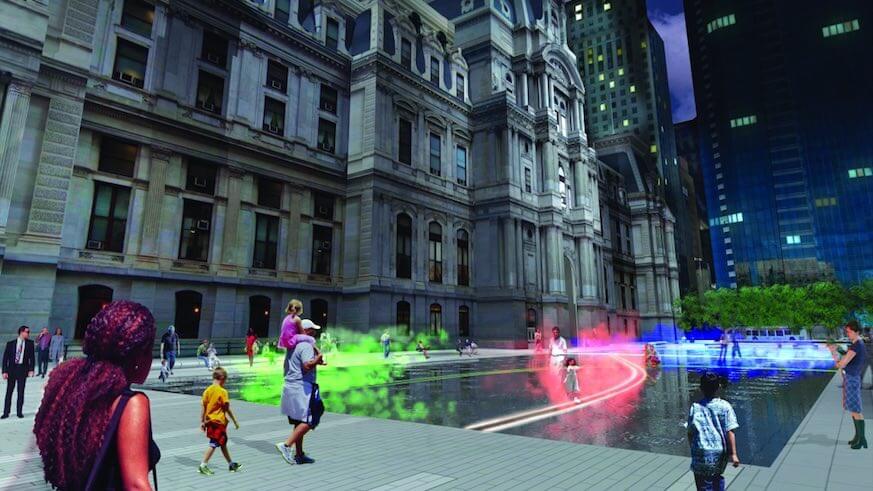When Dilworth Park was unveiled in 2014, one big part of the project was missing: under the park’s popular fountains, a site-specific art installation of colored lights tracking the progress of SEPTA cars passing underneath in real time.
“Pulse,” designed by Boston-area artist Janet Echelman, is intended to be “a living X-ray of the city’s circulatory system,” she said. Situated under pathways through the fountains at Dilworth, the project will light up different colors as it tracks different SEPTA lines: green for trolleys, blue for the Market-Frankford and red for the Broad Street line. Echelman said the goal of Pulse is to “physically and psychologically transform the way people view the city’s central square and enter its public transit system.”
Thanks to a new grant from the William Penn Foundation for $325,000, the Center City District plans to activate the green line in July, they announced earlier this week. The full realization of the project remains indefinitely on hold pending more funding. But Echelman said the staggered approach is helpful for this type of project.
“Since no one has built an artwork like Pulse in a public park, doing it one step at a time can actually help contractors gain practical experience and potentially lower installation costs for later phases,” Echelman said via email. “Initiating Phase One will take this project from rendering and digital animations to a living, breathing artwork. A moving column of green mist will engage adults and the many children who play each day in the fountain.”
Asked about the nearly four years since the redesign of Dilworth to the start of Phase One, Echelman noted that it took 70 years to fundraise for building the Washington Monument in Eakins Oval by the Philly Art Museum. “We’re ahead of the game by that measure,” she said. “It’s not uncommon for projects of this scale and complexity.”
Even though it might have taken a little longer than expected, Pulse will still be a welcome cherry on top of the $55 million Dilworth project, which in the years since its completion has been evaluated a success by the public, with some 10 million visitors reported in 2017 alone.
“During the construction of Dilworth Park in 2014, significant infrastructure was embedded in the park’s 11,160-square-foot fountain in anticipation of the day when Pulse would become a reality,” Center City District President Paul Levy said in a statement. “Pulse will offer Dilworth Park’s diverse group of users and audiences an opportunity to engage with art that is innovative and interactive.”
























